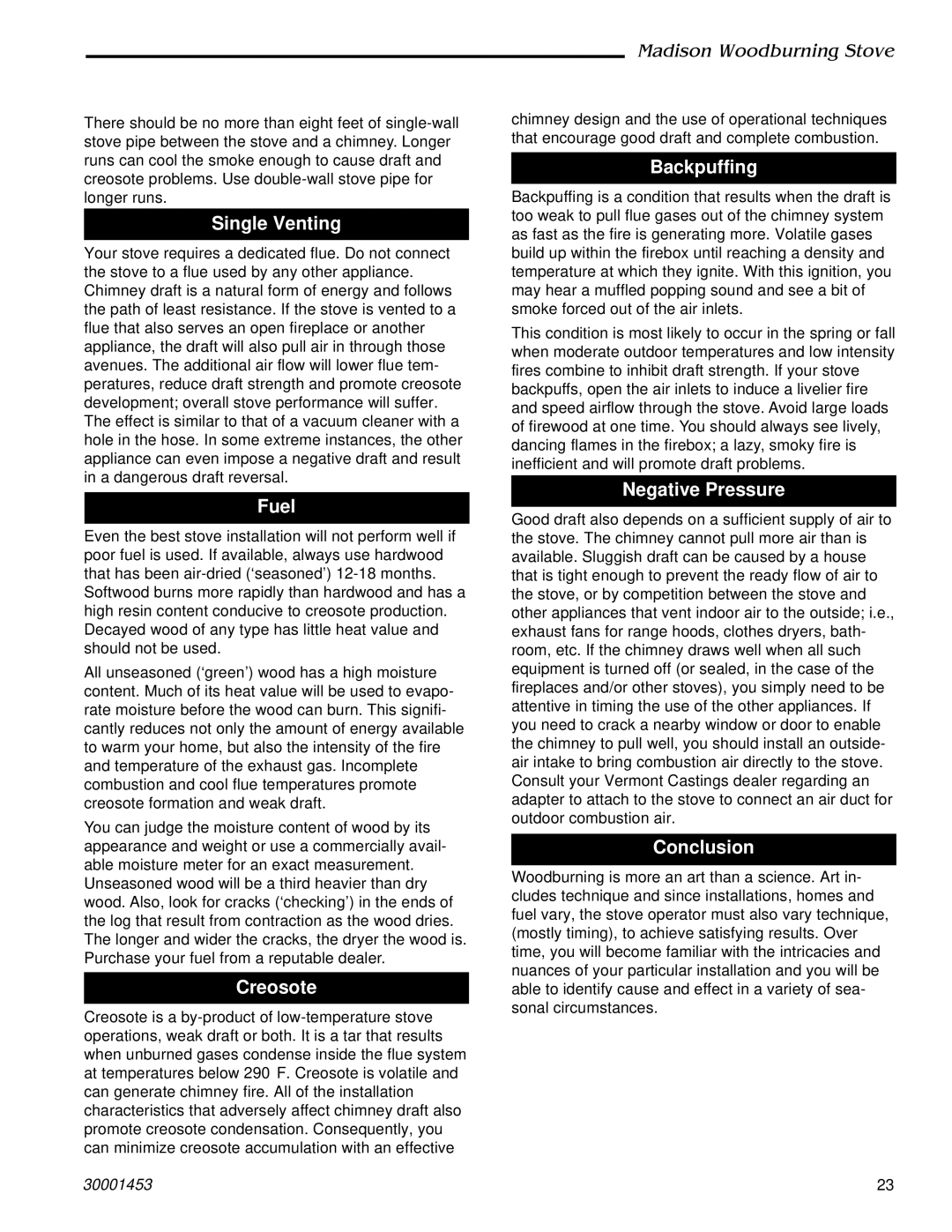410 specifications
Vermont Casting 410 is an innovative wood-burning stove that exemplifies the perfect blend of traditional craftsmanship and modern technology. Known for its high efficiency and aesthetic appeal, it offers a reliable heating solution for homes of varying sizes.One of the main features of the Vermont Casting 410 is its robust construction, made from high-quality cast iron that not only enhances durability but also retains heat effectively. This material ensures that the stove can withstand high temperatures while providing a steady and even heat distribution, making it an ideal choice for homeowners seeking consistent warmth throughout colder months.
The Vermont Casting 410 incorporates advanced combustion technology, which significantly improves its efficiency and lowers emissions. With its CleanBurn technology, this stove generates more heat while consuming less fuel. This results in a longer burn time and minimized wood usage, making it an eco-friendly choice for both the environment and homeowners looking to reduce heating costs.
The versatile design of the Vermont Casting 410 allows it to complement a wide range of interior styles. It features a classic cast iron finish with various color options, enabling users to select a look that suits their home decor. The large viewing window provides a mesmerizing view of the flames, creating a cozy and inviting atmosphere.
Another standout aspect of the Vermont Casting 410 is its easy-to-use features. The stove comes with a simple air control system that allows users to adjust the combustion airflow, optimizing the burn rate based on individual heating needs. This control not only enhances efficiency but also simplifies the operation of the stove, making it user-friendly even for those who are new to wood-burning appliances.
In terms of installation, the Vermont Casting 410 is designed for straightforward setup. It can be connected to existing flue systems, with options for both direct venting and traditional chimney configurations. This flexibility gives homeowners the option to enhance their current heating setup without extensive renovations.
Overall, the Vermont Casting 410 stands out as a reliable, efficient, and stylish wood-burning stove. With its emphasis on quality materials, advanced technology, and user-friendly features, it provides an excellent heating solution while contributing to the comfort and charm of any home. Whether for ambiance or functionality, Vermont Casting 410 exemplifies the essence of modern wood-burning stoves.

